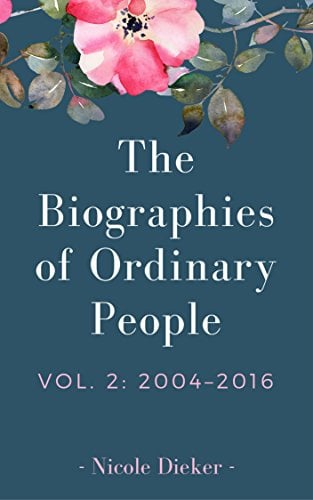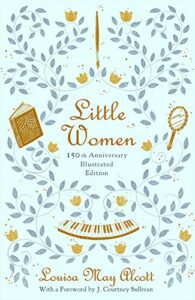The Biographies of Ordinary People: Volume 1: 1989–2000 received a 4+ star review, making it an IndieReader Approved title.
Following find an interview with author Nicole Dieker.
What is the name of the book and when was it published?
The Biographies of Ordinary People: Volume 1: 1989–2000 was published on May 23, 2017.
What’s the book’s first line?
The last night before they left was Rosemary Gruber’s thirty-fifth birthday.
What’s the book about? Give us the “pitch”.
A Millennial-era Little Women that follows three sisters from 1989 to the present.
Here’s a slightly-longer summary:
The Biographies of Ordinary People is the story of the Gruber family: Rosemary and Jack, and their daughters Meredith, Natalie, and Jackie. The two-volume series begins in July 1989, on Rosemary’s thirty-fifth birthday; it ends in November 2016, on Meredith’s thirty-fifth birthday.
When the Grubers move to a small Midwestern town so Jack can teach music at a local college, each family member has an idea of who they might become. Jack wants to foster intellectual curiosity in his students. Rosemary wants to be “the most important person in her own life for the length of an afternoon.” Meredith wants to model herself after the girls she’s read about in books: Betsy Ray, Pauline Fossil, Jo March. Natalie wants to figure out how she’s different from her sisters — and Jackie, the youngest, wants to sing.
Set against the past thirty years of social and cultural changes, this story of family, friendship, and artistic ambition takes us into intimately familiar experiences: putting on a play, falling out with a best friend, getting dial-up internet for the first time. Drinking sparkling wine out of a paper cup on December 31, 1999 and wondering what will happen next.
What inspired you to write the book? A particular person? An event?
I’ve been trying to write this book since 2004. I was a senior in college, studying music and theater, and I’d just had this conversation with a mentor in which I asked “where are the biographies of ordinary people?” Fine arts students spend a lot of time studying the lives of famous people as if they should be the models for our own creative practice, but most of us aren’t going to reach that level of fame or its accompanying privileges. How are the rest of us supposed to construct our lives — especially if we want to keep making art?
I literally went back to my dorm and started outlining a novel that would answer that question. I wasn’t ready to write the novel yet — I hadn’t really constructed a life for myself, for starters — but I kept thinking about the book and making notes on the characters and writing draft chapters until, over a decade later, I was finally able to sit down and write The Biographies of Ordinary People.
What’s the main reason someone should really read this book?
You should read this book if you grew up loving stories like Little Women or Anne of Green Gables or A Tree Grows in Brooklyn — the types of stories that follow young women with artistic ambitions from childhood to adulthood.
What’s the most distinctive thing about the main character? Who-real or fictional-would you say the character reminds you of?
Here’s a quote from one of my Goodreads reviews: “I also loved this novel because I identified so strongly with Meredith — I’m amazed someone else can understand and articulate how she lives in her own head and observes/analyzes/self-edits like I did as a child (and still do).”
I’d say Meredith reminds me of me, except she also reminds many of my readers of themselves!
When did you first decide to become an author?
Maybe when I handed my mother a five-page book I’d made, with illustrations, called “Marijana’s Deram.” (I was in kindergarten and I couldn’t spell “dream.”)
Is this the first book you’ve written?
Nope! Not counting the books I put together in kindergarten, my first real book was probably the 200-page speculative fiction novel I wrote in high school. Without being too spoilery, one of the sisters in Biographies writes a similar type of novel as a teenager — and her reaction when she finally completes it is true-to-life.
What do you do for work when you’re not writing?
More writing! I’ve been a full-time freelancer for the past six years, and my writing has appeared in Lifehacker, Popular Science, The Toast, and more. I’m also the editor of The Billfold, a website that focuses on having honest conversations about money, and the host of the Writing & Money podcast. I also regularly teach writing classes, so if you’re ever in a city where I’m teaching a class, I’d love to meet you!
What’s a great piece of advice that you can share with fellow indie authors?
Figure out the money part. How are you going to cover your book’s publication budget? How much can you afford to spend on publicity, or a book tour? How should you price your books to maximize both your sales and your revenue? Every indie writer does the money thing differently (I went the crowdfunding route, for example), but you need to put as much thought into your budget and your potential earnings/expenses as you do into the book itself. After all, you’re both an author and a publisher — so embrace both roles.


